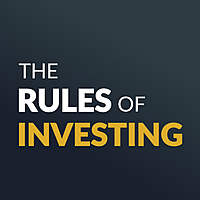The property assets still trading at a discount as investors chase growth

Property has always moved in cycles. When interest rates rise, sentiment often turns sour. When they fall, optimism returns. Yet beneath the surface, long-term performance is governed by the same forces - demand and supply.
Right now, as investors gravitate toward the excitement of AI and other growth themes, many real estate assets are quietly trading at deep discounts to their replacement cost. For patient investors, that creates opportunity.
“We’re seeing some of the deepest discounts to replacement cost we’ve ever witnessed,” says Chris Bedingfield, Principal and Portfolio Manager at Quay Global Investors.
“These are tangible assets that compound quietly in the background, even when they’re out of favour.”
Bedingfield joined The Rules of Investing to share his take on global listed real estate, the outlook for housing and aged care, and why the best returns in property often come to those who wait.
Click on the player to listen or read a summary below
Cycles, sentiment and opportunity
The global listed real estate universe is far larger and more diverse than most investors realise. Bedingfield estimates it’s worth around $2 trillion (AUD) and covers everything from senior housing and industrial warehouses to retail, self-storage and data centres.
Quay focuses on companies that already own and lease their properties, rather than developers or fund managers. “We’re buying businesses where the real estate’s already built, the tenants are in place, and the cash flow is real,” Bedingfield says.
While the United States accounts for about two-thirds of the listed market, opportunities stretch across Europe, Japan, Singapore, and Australia. For investors, Bedingfield sees it as a total-return asset class that can match or beat inflation over time.
“Real estate will probably do best when there’s uncertainty around other sectors,” he says. “After the tech wreck in the early 2000s, people started looking for something tangible, and listed real estate outperformed equities by a factor of two.”
That dynamic has resurfaced in recent years. Following a post-COVID construction surge, the sector is now digesting the effects of too much supply and the rapid rise in interest rates.
“There’s a real lag in real estate,” Bedingfield explains. “It can take up to three years for projects to go from concept to delivery. We’re now at the point where the maths doesn’t stack up to build new supply.”
Outside of data centres and some logistics assets, higher costs and funding rates have pushed new development below breakeven. For existing owners, that’s a positive. “Less new supply means tighter rental markets, higher rents, and eventually rising values,” he says.
While interest rates have dominated the conversation, Bedingfield sees their influence as mostly psychological. “Rates affect sentiment as much as anything else,” he says. “When you look out four or five years, the correlation between rates and real estate returns actually falls to zero.”
He points to Australia’s experience in 2022. “When the RBA lifted the cash rate from near zero to 4.6%, there were predictions of 20, 30, even 40% price falls - but they didn’t happen. The demand-supply fundamentals were simply too strong.”
Aged care: a glimpse of the future
Among the many sectors Quay watches, senior housing stands out as a useful guide to what might come next across broader real estate markets.
Coming out of the pandemic, new construction in aged care stopped almost entirely. Occupancy rates had been hit hard, mortality rates were high, and few developers wanted to take on the risk. Yet demand never went away.
“Some of these stocks are up between 50% and 100% since 2022,” Bedingfield says. “There’s been no new supply, but demand keeps rising as populations age.”
Even now, few new facilities are being built. Inflation and labour shortages have made development costs prohibitive. “It shows just how expensive it’s become to build,” he says. “And that’s informative for the rest of the market. Other sectors will reach the same point - no new supply, rising demand, and eventually, price growth.”
The opportunities in REITs today
Those same supply constraints, combined with subdued sentiment, have left listed property trading at unusually attractive levels.
“We’re seeing 20–30% discounts to replacement cost across the portfolio,” Bedingfield says. “On a relative basis, REITs are as cheap as they’ve been in 15 years - even though earnings are still growing.”
Quay’s holdings include Ventas Inc (NYSE: VTR), a senior housing operator in the U.S., trading at roughly half the earnings multiple of its peer Welltower Inc (NYSE: WELL). In the UK, Big Yellow Group PLC (LON: BYG) and Safestore Holdings PLC (LON: SAFE) offer exposure to Europe’s under-provisioned self-storage market.
“We’re also finding opportunities in single-family housing in the U.S.,” he says. “We don’t take development risk - we focus on existing, income-producing assets.”
While data centres remain a hot topic, Bedingfield is cautious. “There’s a lot of capital chasing the theme,” he warns. “In real estate, success often brings about its own downfall - the more people build, the more returns get competed away.”
Patience pays in real estate investing
If there’s a single principle underpinning Quay’s approach, it’s patience.
“Real estate is a slow-moving asset class,” Bedingfield says.
“But in listed markets, people lose patience because they want that next quarterly dopamine hit.”
He believes the best returns come from doing very little. “Ask anyone who’s owned an investment property for 10 or 15 years how they made money - they’ll tell you they just held it and collected rent.”
The compounding effect of rental income plus inflation is powerful, and unlike many industries, property faces little risk of obsolescence. “It’s hard to see a world where a house in Sydney or an apartment in New York isn’t needed,” he says. “You can’t say the same for some of the biggest companies in history - think Kodak or BlackBerry.”
That mindset shapes how Quay invests. Turnover sits around 20% a year, implying a five-year holding period. If markets were to shut for that long, Bedingfield says he’d be happy to own the same portfolio: Ventas Inc (NYSE: VTR) and Chartwell Retirement Residences (TSE: CSH.UN) for their demographic tailwinds, and Scentre Group (ASX: SCG) for its irreplaceable shopping centre assets.
“Retailers need to be in those top-tier centres,” he says. “No one’s building new mega malls anymore, so the supply dynamics are compelling.”
Australia’s structural housing affordability challenge
Closer to home, housing affordability remains one of the toughest challenges facing Australia’s economy and policymakers. Ambitious targets for new homes are unlikely to be met unless construction costs fall meaningfully.
“They’ve got to find a way to lower the cost to build,” Bedingfield says. “People looking at credit have it the wrong way around - house prices drive credit demand, not the other way.”
Australia’s reliance on private developers means supply will only come if it’s profitable. “Developers are cost-plus businesses,” he says. “If governments add fees or levies, those costs get passed straight on to buyers.”
That makes genuine affordability reform politically difficult. “It’s not popular to say we need to reduce the burden on developers,” he says. “But unless policymakers restore the profit incentive, supply won’t come.”
1 stock mentioned


